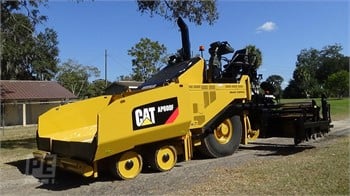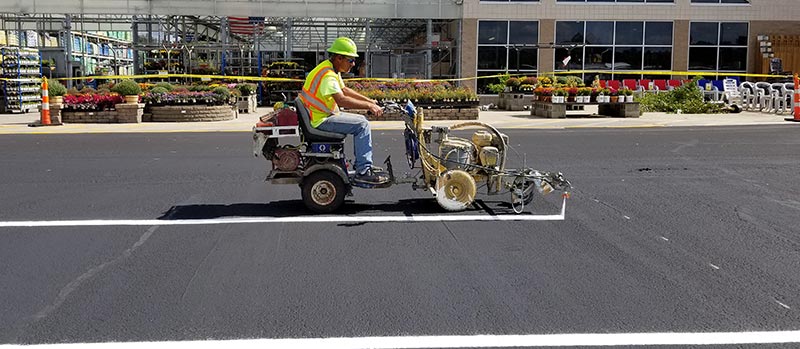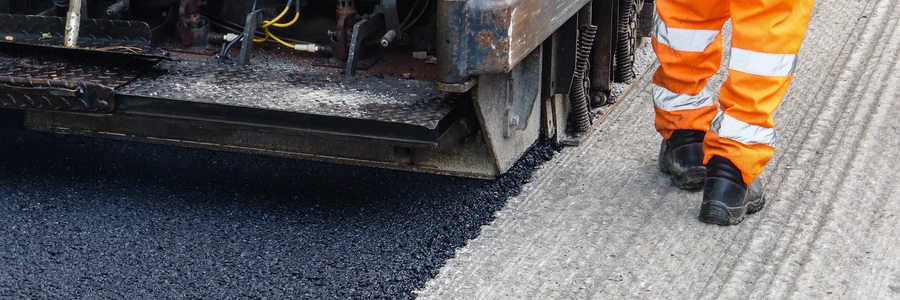The 9-Second Trick For A1 Professional Asphalt & Sealing Llc
Some Known Questions About A1 Professional Asphalt & Sealing Llc.
Table of ContentsAbout A1 Professional Asphalt & Sealing LlcUnknown Facts About A1 Professional Asphalt & Sealing LlcSome Of A1 Professional Asphalt & Sealing LlcGetting My A1 Professional Asphalt & Sealing Llc To WorkGetting My A1 Professional Asphalt & Sealing Llc To Work

The oil in an auto engine is not just oil. The REOB has all the additives that were in the waste oil as well as the wear steels from the engine (mainly iron and copper).
However, by making numerous blends making use of various REOB examples and different asphalt binders, the variations mainly can be balanced out. Numerous States provided samples of recognized REOB composition to TFHRC researchers, who examined the samples to compare the portion of included (understood) REOB to the discovered (checked) quantity. The evaluations revealed a similar percent of included and discovered REOB.
Facts About A1 Professional Asphalt & Sealing Llc Revealed
None of those States understood that the asphalt they were getting included REOB. One State insisted its samples had no REOB - https://pastebin.com/u/a1asphaltseal.
Of the 1,532 samples evaluated, 12 percent consisted of REOB, and some had substantially high levels of it at 1020 percent. The greatest level was 34 percent in an example from Texas, which TxDOT had actually utilized in a patching compound. This screening additionally disclosed the existence of phosphoric acid in 11 percent of the examples, and 2 percent consisted of ground tire rubber.
Two years earlier at TRB's yearly conference, the Federal researchers held an REOB workshop and offered the searchings for of their research laboratory examinations to a standing room-only crowd. Although some agencies do not especially outlaw REOB, they do enforce physical examinations that prevent its useeffectively a ban. diagonal parking vs straight parking. Others do not prohibit it by requirements, however have agreements with asphalt vendors to prevent the use of REOB
Getting The A1 Professional Asphalt & Sealing Llc To Work
A handful do allow REOB, some within certain limitations. Ohio and Texas limitation degrees to less than 5 percent of the asphalt. To establish a dependable test technique that all States can utilize, the TFHRC researchers set up a round-robin test plan. The participants are 11 State highway agencies (Illinois, Massachusetts, Minnesota, Mississippi, Montana, North Carolina, Oklahoma, South Carolina, Texas, Vermont, and Wyoming), 2 independent testing labs, the Ministry of Transport in Ontario, Queen's University in Ontario, and an Ontario paving professional.
The individuals are examining the examples individually making use of the guidelines provided by the TFHRC scientists. The outcome will be a proposed AASHTO test method that any type of State can embrace and use.
The sidewalk with REOB, which lies 0.6 mile (1 kilometer) from the sidewalk without REOB, has identical subgrade, website traffic thickness, and climate. However, the section of Highway655 with 5 to 10 percent REOB showed substantial splitting. In this instance, the visibility of REOB was the identified source of cracking at a reduced temperatures.
"In our experience in copyright, even little amounts of 23 percent can be an issue." An area of test sidewalk in Minnesota (MN1-4) located to contain REOB also broke too soon. The pavement done well for the initial 3 to 4 years, however after that started to split. This pavement is likewise based on reduced temperature levels.
What Does A1 Professional Asphalt & Sealing Llc Do?
The tests were not substantial, however they showed that at degrees of 6 percent or even more, the tensile toughness of the asphalt dropped considerably. At a level of 3.5 percent REOB, the variation in the physical examination approaches was better than the result of REOB. It was challenging for researchers to evaluate whether REOB was existing. https://www.metal-archives.com/users/a1asphaltseal.

One binder criterion taken into consideration is the distinction between the low temperature level critical specification temperature level for rigidity (S) in the flexing light beam rheometer and the flexing beam of light rheometer creep slope (m-value) kept in mind as Tcritical. TC = TC (S) TC (m-value). Examination of this parameter is still ongoing. 2 independent research study groups, one from AASHTO and the various other from the Asphalt Institute, wrapped up that more research is required on the use of REOB in asphalt.
Formerly, all asphalt screening determined design residential properties such as stiffness. These examinations do not show what materials had been added to the asphalt.

Some Known Details About A1 Professional Asphalt & Sealing Llc
These outcomes show there are weaknesses in the standardized engineering screening methods that may be manipulated. The producer might have a financial advantage and the product passes all the standardized tests, yet the item may not be advantageous to making certain long-lasting performance. To resolve this issue and the development of brand-new asphalt additives and extenders, TFHRC is starting a research program to use portable spectroscopic tools, x-ray fluorescence spectroscopy, and Fourier transform infrared spectroscopy to enable evaluations to be performed in the field as opposed to needing to take samples back to the laboratory.